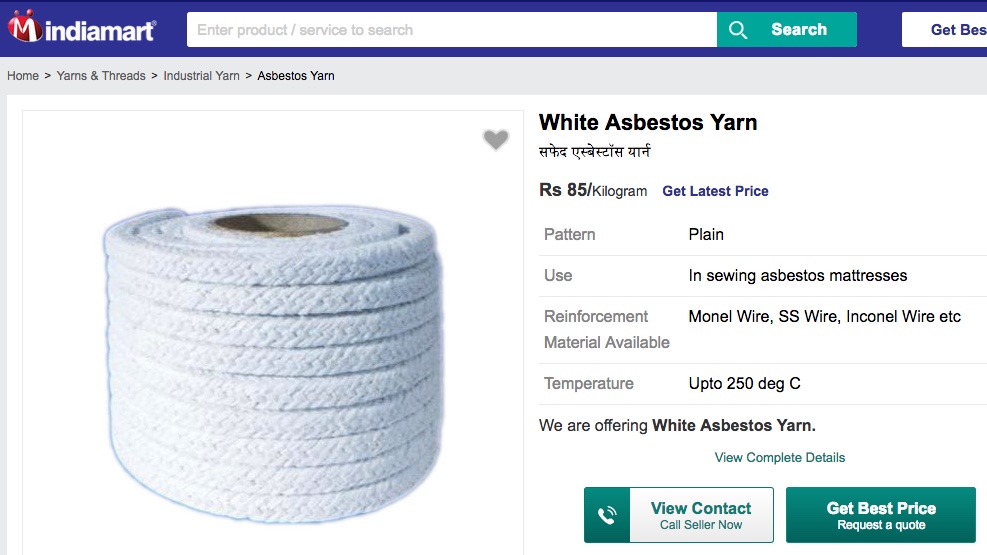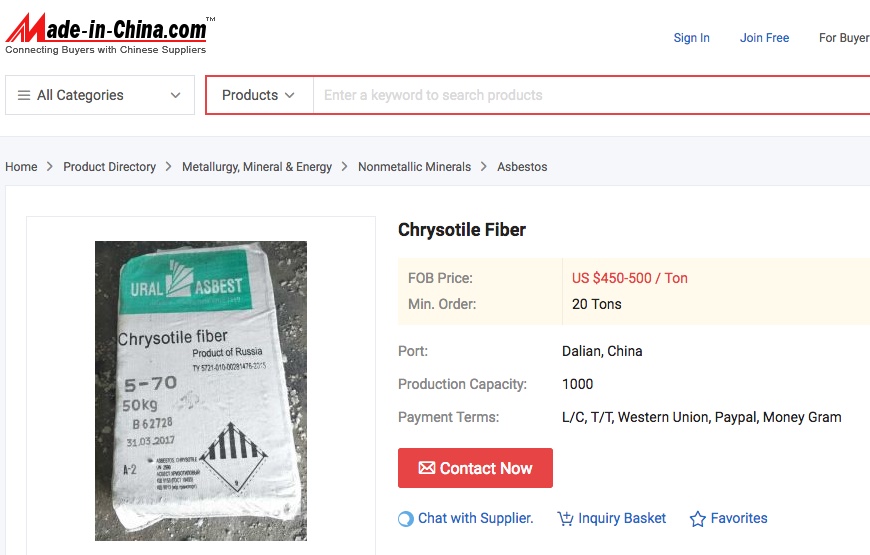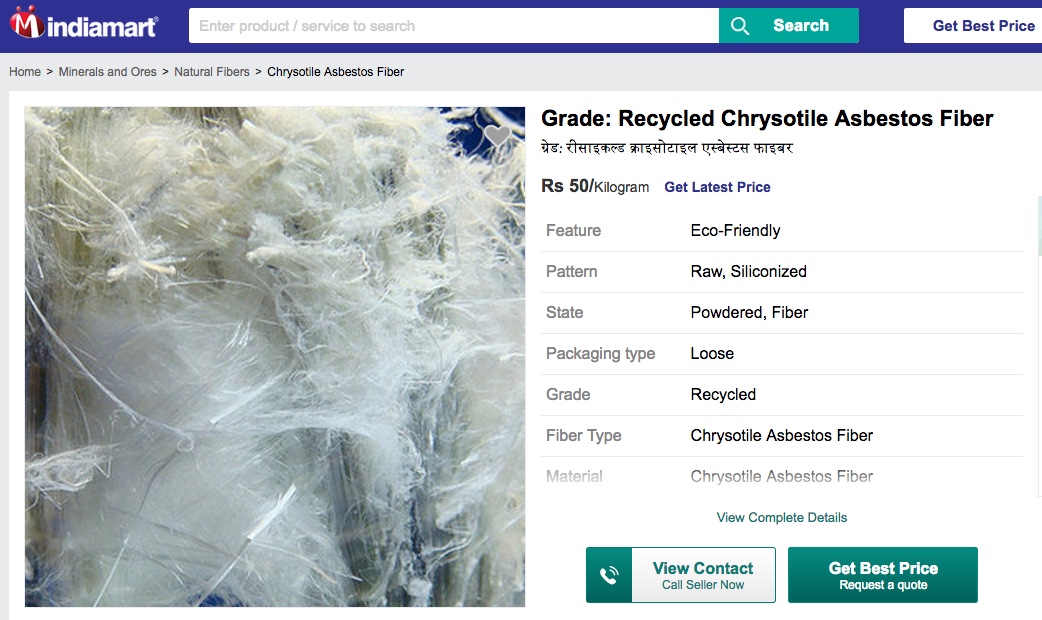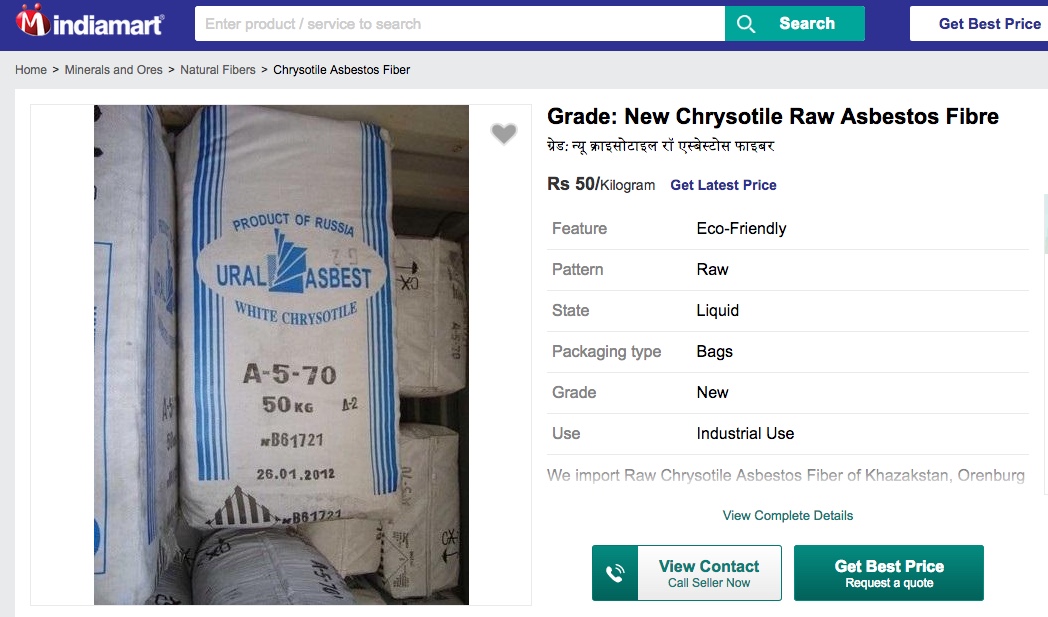
What you always wanted to know about asbestos
... or should know

First of all, asbestos is not a plastic and it is also not toxic, as is often claimed.
It is a term for a group of different natural (by the way - very beautiful!) minerals which have become famous in the building industry at the beginning of the 20th century due to their technically favourable properties such as their fibrous, needle-like structure, their chemical resistance and above all their fire resistance.
At that time it was praised as the new miracle cure for fire protection. Today - and rightly so - it has been outlawed because of the danger it poses to health. Although - the suspicion of a health hazard has existed since 1930. With the recognition of asbestosis and later mesothelioma (pleural cancer) as occupational diseases, the connection between asbestos exposure and typical cancers was officially acknowledged and accepted in 1943. It was not until 1970 that asbestos was classified as a carcinogen. Nevertheless, asbestos was used in Germany until 1993 and in Europe until 2005 (!!!).
Why did this take so long? Well, asbestos was a popular, easily available miracle raw material, with which much money could be earned in the specialized raw material and processing industry - and still is - but no longer with us. It is still a huge market!

In many countries such as China, India and Russia, economic interests still play such an important role that asbestos products are still mined and sold in huge quantities.
This is no joke: Current offers in the web.
-

[Translate to Englisch:] Asbestschnur. Anwendung: Einfach in die Asbestmatratze einnähen! -

[Translate to Englisch:] Asbest! Nur 25$ pro Gebinde. Aber Vorsicht: Mindestabnahme 20 Tonnen! -

[Translate to Englisch:] Asbest-Fasern: Eco Friendly, recycled! Zynismus oder Geschäft? -

[Translate to Englisch:] Asbest. Ökologisch unbedenklich. Nur: Aggregatzustand flüssig?
- 3rd century B.C.
Asbestos is first mentioned in a book about stones by Theophrast. In Athens a wick of asbestos was used for the Eternal Flame of the Acropolis.
- Pliny the Elder
reports of shrouds and tablecloths made of asbestos that could be cleaned by fire.
- From 1820
Manufacture of fireproof clothing for firefighters and thermal insulation for steam engines.
- 1870
First asbestos plant in Frankfurt am Main for industrial processing of imported asbestos raw materials. Imports from Russia and China.
- 1877
Mining of one of the largest asbestos deposits in the world: Quebec, Canada.
- 1878
Foundation of the Seitz company in Bad Kreuznach. Production of asbestos alluvial filters for wine production.
- 1900
The Austrian Ludwig Hatscheck receives the patent for Eternit as owner of an asbestos cement factory. Asbestosis is described as a disease for the first time.
- 1912
Foundation of the Fulgurit-Werke Luthe.
- 1920
In Germany there are already 59 asbestos plants for the processing of asbestos raw materials.
- 1929
Foundation of Deutsche Asbestzement AG in Berlin.
- 1939
In World War II mailbags, toothpaste, beverage filters, etc. were made of asbestos. Spraying asbestos was used for the fire protection of load-bearing components.
- 1943
Lung cancer caused by exposure to asbestos was recognised as an occupational disease for the first time.
- 1965
Import of asbestos reaches its peak with 170000 tons per year. Between 1950 and 1990, around 4.35 million tonnes were imported into West Germany alone as raw material.
- 1969
Due to the increasing number of illnesses and the decline in consumption, spray asbestos is banned in the GDR.
- 1970
In Germany, asbestos is officially classified as a carcinogen. By the end of the 1960s, around 30000 km of drinking water pipes made of asbestos cement had been laid in western Germany.
- 1971
Asbestos is repeatedly detected in Johnson & Johnson baby powder by internal controls (most recently in 2000), but never reported to the authorities.
- 1973
Until 1976 construction of the Palace of the Republic in East Berlin.
- 1979
Ban on sprayed asbestos in West Germany. Asbestos is currently contained in over 3000 products.
- 1989
American and Canadian scientists establish a causal link between asbestos in drinking water and cancer of various organs. Despite these findings, the federal government, the health department and the Association of the Fibre Cement Industry deny any health risks posed by asbestos in drinking water.
- 1990
General ban on the production and use of asbestos in Switzerland and Austria. The Swiss lobby association Arbeitskreis Asbestos had delayed the ban or the classification as poison by more than 9 years, contrary to all health knowledge.
- 1993
General ban on the production and use of asbestos in Germany.
- 2005
EU-wide ban.
- 2008
Canada was the only western industrial nation to prevent the so-called Rotterdam Convention in Rome from having stricter export rules for asbestos and the producer countries from having to inform their customers abroad about the health risks in advance.
- 2012
Decommissioning of the world's largest asbestos mine in the village of Asbestosos, Quebec, Canada.
- 2018
Jonson & Johnson again accused Jonson & Johnson of having known about asbestos in baby powder since 1971 and never reporting to the authorities.
- 2019
Asbestos is still mined and sold in unimaginable quantities in Russia, China, India and Thailand.

